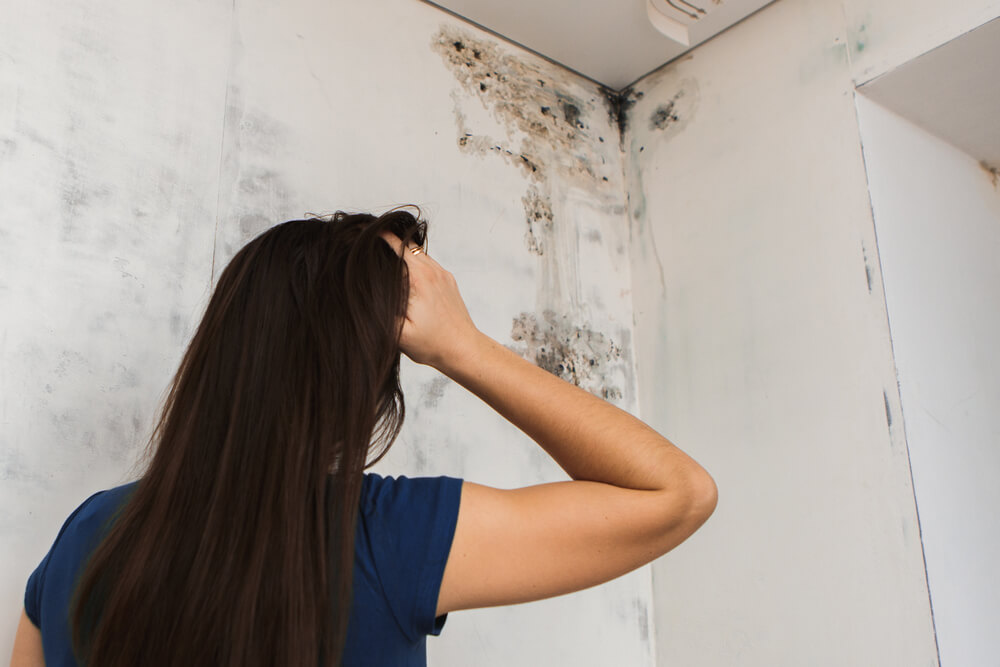In Health
Published 11/20/2025
11 Can’t-Miss Symptoms of Shingles
It’s a fact that 1 out of 3 adults in America will get shingles at some point in their lives. Shingles, which is also known as herpes zoster, can infect people who have had chickenpox in the past; the virus that causes shingles hides away in the nervous system until it reactivates. Scientists still do not know what, specifically, causes this virus to reactivate.
Is Shingles Contagious?
The virus that causes shingles is highly contagious; one infected person with shingles can easily spread the virus to someone else, causing them to develop chicken pox. In turn, they may eventually develop shingles.
While painful and burdensome, shingles is usually fairly harmless, but there can be severe complications.
Complications
Shingles is very unpleasant and can be extremely painful, but the infection is usually relatively harmless. However, because shingles tends to be a problem for adults with compromised immune systems, who are on intensive medications, or who have other medical conditions, shingles can become dangerous.
Complications include:
- Postherpetic Neuralgia (Nerve and Skin Pain Following Shingles)
- Vision Loss
- Nerve Damage
- Skin Infections
- Increased Risk for Secondary Infections, Such as Pneumonia
What are the Symptoms of Shingles?
Understanding shingles starts with understanding the symptoms for this viral infection.
1. Pain

The earliest sign of shingles is pain. This pain typically starts in the back, where the signature shingles blisters are most likely to appear, but can also be located on the neck or face. This event usually happens on one side of the torso or face before the rashes set in.
What Shingles-related Pain Feels Like
This pain feels like an uncomfortable pain in the skin that is accompanied by a tingling sensation. Once the blisters set in, this pain feels more like that of a scab or open wound. The blisters are easy to aggravate; even simple movements can be enough to set off this pain.
If the shingles case is severe, the pain can persist even after the episode clears up.
Why Shingles Causes Pain
Shingles may seem like a skin disorder, but it actually affects the nervous system. You see, the shingles virus spreads through nerves before becoming visible on the skin. This movement leads to pain even when a rash is not present.
A general sense of pain isn’t the only physical sensation that comes with a shingles infection, though…
2. Burning

A shingles infection also commonly causes an unpleasant burning sensation. This burning sensation is typically localized to areas where the skin is breaking out; however, it can also persist after the skin has cleared up.
What Shingles Burning Feels Like
This burning pain can be either deep in the tissue or on the surface of the skin. It can also be localized to areas with rashes or more generally lingering beneath the skin. It all depends on why you are experiencing a burning sensation.
Why Shingles Causes Burning
The shingles infection damages the nervous system. This damage often comes across as a burning, painful sensation. This burning can even persist after the infection has cleared up. This fact is due to a complication called postherpetic neuralgia, which is caused by nerve damage from severe cases of shingles.
This burning sensation often accompanies a tingling along the nerves…
3. Numbness & Tingling

Both numbness and tingling are common symptoms of shingles. As the virus reactivates in the nerves and spreads through the body, it is common to experience tingling. This sensation usually follows the same path as the pain. That is, the tingling and numbness will affect one side of the body before the rash sets in.
What Does Shingles-related Numbness & Tingling Feels Like?
This symptom feels like one side of your body is experiencing the “pins and needles” sensation. This feeling has been described as similar to the sensation that occurs when your foot “falls asleep.”
Why Shingles Causes Numbness & Tingling
The numbness and tingling caused by the shingles virus is due to the virus being primarily an infection of the nervous system. Specifically, while the virus reactivates and spreads, the nervous system becomes damaged. This damage causes many of the most recognizable symptoms of shingles, including numbness and tingling.
This damage also includes changing one of our most important senses…
4. Sensitivity to Touch

Shingles can make an individual’s sensitivity to touch much more extreme. In some cases, the sensation of wearing a shirt can be uncomfortable while in others the sense of touch can even cause physical pain.
What Sensitivity to Touch Feels Like
The best way to describe this sensation is to imagine that your sense of touch is turned up to an 11 on a 10-point scale. Sensations that we are usually accustomed to, such as our constant contact with clothing or the sensation of laying down, can become uncomfortable or downright painful.
Why Shingles Causes Sensitivity to Touch
Shingles infects the nervous system and changes how we perceive our sense of touch. By damaging our nerves, the virus can make our sense of touch that much more extreme.
While shingles is an infection of the nervous system, though, most people recognize it for its telltale rashes…
5. Red Rash

The most common sign of shingles? The signature red rash. This rash is the most noticeable symptom, even though it is not the first. It can appear anywhere on the torso, neck, and even the face and eyes.
What a Shingles Red Rash Feels Like
The signature shingles rash feels very uncomfortable. After all, this rash creates a variety of sensations including pain, burning, and tingling. It is also easy to irritate and often leads to open wounds and burst blisters.
Why Shingles Causes a Red Rash
When the virus responsible for shingles infects the nerves, it causes inflammation. This inflammation along the infected nerves leads to the signature shingles rash.
The shingles rash is easy to irritate and quickly leads to the following…
6. Blisters

The rash caused by shingles quickly turns into blisters. These blisters are very uncomfortable and often burst open. This symptom usually occurs well into the progression of the infection and is one of the sure signs of a shingles infection.
What Shingles Blisters Feels Like
These blisters are extremely uncomfortable; they follow the same infectious path as the rash and pain discussed earlier. These blisters can become painful and even turn into open sores. Unfortunately, they are also easy to irritate, which means that they are prone to bursting open. This bursting, in turn, leads to an uncomfortable pus being expelled by the blister.
Between the pain and uncomfortable sensations, blisters are one of the most noticeable signs of a shingles infection.
Why Shingles Causes Blisters
The blistering phase of a shingles infection can last anywhere from one to two weeks. During this time, the rash turns into fluid-filled blisters that crust over until the infection clears. This cycle of rash to blisters is part of the course of a shingles infection.
While shingles is mostly known for its extremely noticeable and unique symptoms, there are a few that are lesser known…
7. Itching

A shingles infection causes a lot of irritation due to damage to the skin. Specifically, the rash and blisters associated with this infection typically cause an itching sensation. This itching can last until the rashes, blisters, and scabs have run their course.
What Shingles Itching Feels Like
The itching sensation associated with shingles is typically located in areas with active rashes, blisters, and sores. The shingles rash and blisters are highly irritating and often cause itching sensations where they are located.
Because these blisters are fluid filled and often burst, itching can also be a sign of a secondary infection. Namely, if the itching gets extreme, it could be a sign that an open blister has become infected.
Why Shingles Causes Itching
Shingles causes plenty of irritation to nerves and the skin. This fact means that there are countless opportunities for itching to occur. The skin reacts with an itching sensation to a variety of causes; that fact means that the rashes, blisters, and scabs that come with shingles can create conditions right for some intense itching.
Another notable shingles sign is the common fever…
8. Fever

Fevers are the body’s response to a wide variety of illnesses. Because a fever is so general, it alone isn’t a sign of anything specific. To put it simply, shingles, like many infections, causes the body to have a fever.
What is a Fever?
A fever is the body attempting to destroy an invading virus or bacteria by making its temperature too high for the invasive microbe.
What Shingles-related Fever Feels Like
Medically speaking, fevers are any body temperature over 100.4 degrees Fahrenheit, but laypeople tend to recognize any higher-than-normal temperature as a fever.
Fevers make people feel uncomfortable and often come with chills, aches, and a general feeling of sickness.
Why Shingles Causes Fever
Shingles is caused by a viral infection. Therefore, the body responds to this virus, as it does with many infections, by raising its temperature. Fevers are part of the body’s immune response to infection.
Another general sign of sickness that is associated with shingles is the following…
9. Fatigue

It takes a lot of energy for the body to fight off infections. That’s why we tend to sleep a lot and need more nutrients than normal when we are sick. Because of these higher energy demands, we can also become fatigued when sick.
What Fatigue Feels Like
Fatigue is a general sense of being tired. It can be a mild feeling—like being slightly sleeping—or you can feel completely drained of energy. It all depends on your individual response to infection and how hard the body needs to work to fight off the virus.
Why Singles Causes Fatigue
While the body is busy fighting infection, it uses up energy that would otherwise go to your daily activities. This action can make you feel just as tired as you do after a busy day or a hard workout. Think about it this way: while you might feel like you’ve been resting all day, your body has been working overtime to fight off the infection.
Another general sign of sickness that is linked to shingles is the following…
10. Headache

Headaches are a sure sign of something being wrong. The difficulty lies in determining what that problem is.
Headaches can be caused by anything ranging from stress to serious medical conditions. They can also be caused by shingles.
What a Shingles Headache Feels Like
Headaches are any of a variety of types of pain felt coming from the head. It can feel like a throbbing sensation or a general pain; it can be on one side of the head or felt across both sides.
This pain can last throughout the entire shingles infection or pop up sporadically throughout.
Why a Shingles Causes Headaches
Shingles, like many infections, creates conditions that are ripe for a headache. The body becomes overworked and taxed by the fight with the infection while the pain and irritation lead to high levels of stress. In short, a shingles infection is a headache perfect storm.
Related to headaches is the following irritating symptom of shingles…
11. Sensitivity to Light

A shingles infection can also create a sensitivity to light. Because many problems can cause this symptom, it is typically only linked to shingles if it also happens during other signs of the infection.
What Sensitivity to Light Feels Like
When individuals experience sensitivity to light, it can feel like even the dimmest sources of light are too bright to look at.
Why Shingles Causes Sensitivity to Light
In some cases, shingles can infect the eyes; these infections can become dangerous and cause permanent damage to the eyes and the sense of vision. If shingles reaches the eyes, there is a good chance that the infected person will experience a sensitivity to light.
If you’ve noticed any of these signs of shingles, you should talk to a medical professional.
What’s Most Important to Remember About Having Shingles?
Shingles is a very common disease that can have some severe symptoms and consequences. Thankfully, it is also easily treatable. If you’ve noticed any of these symptoms of shingles, get in touch with your doctor today.
Treatments for shingles typically help you manage symptoms with remedies like lotions for the rash and blisters. Doctors can also prescribe antiviral medication to help your body combat the infection.





